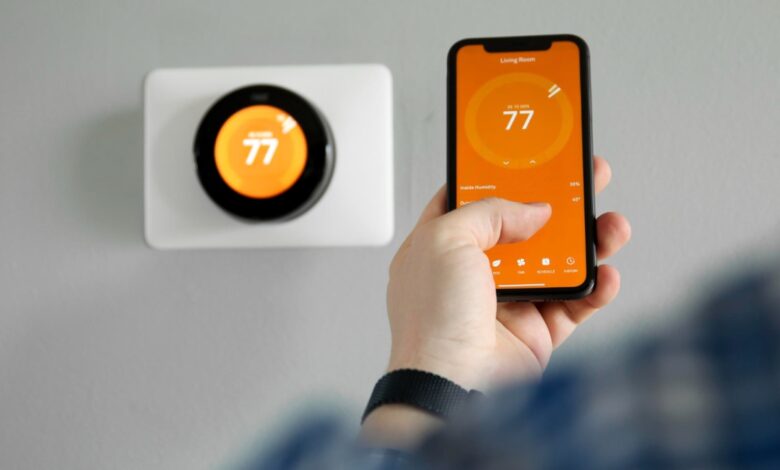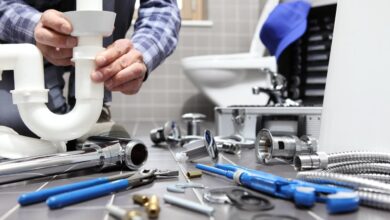How Smart Thermostats Can Help Prevent Costly AC and Furnace Repairs

Maintaining a comfortable indoor temperature is essential for most households, but it can also come with significant energy costs and the potential for wear and tear on your HVAC system. One way to improve energy efficiency and extend the lifespan of your heating and cooling systems is by using a smart thermostat. These devices offer more than just convenient temperature control; they actively monitor your HVAC system, provide valuable insights, and help prevent costly repairs by promoting more efficient use of your furnace and air conditioner. A Jacksonville HVAC contractor can also provide professional guidance on integrating smart thermostats into your system for optimal performance. We will explore how smart thermostats contribute to the longevity and performance of your HVAC system, ultimately saving homeowners time and money.
Benefits of smart thermostats
- Enhanced Monitoring and Early Detection of Issues
One key benefit of smart thermostats is their ability to monitor your HVAC system’s performance and alert you to potential problems before they become major. Smart thermostats continuously track the activity of your furnace and air conditioner, collecting data on run times, temperature fluctuations, and overall efficiency. Suppose the thermostat detects an unusual pattern, such as your furnace running longer than usual or your AC struggling to maintain the desired temperature. In that case, it can alert you to the problem.
Early detection of issues such as these can prevent more significant damage to your HVAC system. For example, if your air conditioner is running longer than necessary, it may be a sign that the filters are clogged, the refrigerant levels are low, or the compressor has a problem. Similarly, if the furnace is cycling on and off too frequently, it could indicate an issue with the thermostat or airflow. By receiving timely notifications from your smart thermostat, you can address these problems early, preventing expensive repairs or system breakdowns.
- Optimizing HVAC Efficiency for Reduced Wear and Tear
Another way smart thermostats help prevent costly AC and furnace repairs is by optimizing the efficiency of your HVAC system. Many smart thermostats are equipped with features that allow them to learn your heating and cooling preferences and adjust the temperature automatically based on your schedule. For instance, the thermostat may lower the temperature when you’re not home and raise it before you return, ensuring comfort without overworking the system.
This level of automation reduces unnecessary strain on your air conditioner and furnace by preventing them from running constantly when not needed. Over time, this helps reduce wear and tear on the system, extending the life of critical components such as the blower motor, compressor, and heat exchanger. By optimizing the use of your HVAC system, smart thermostats minimize the risk of premature breakdowns and the need for costly repairs.
In addition to adjusting the temperature based on your schedule, some smart thermostats can integrate with sensors to detect when certain rooms are occupied and adjust the temperature accordingly. This further improves efficiency by ensuring that your HVAC system only works when and where it’s needed, reducing the workload on the system and preventing overheating or overcooling in unoccupied spaces.
- Regular Maintenance Reminders
Routine maintenance is critical for running your HVAC system smoothly and preventing unexpected repairs. However, it’s easy to forget when it’s time for basic maintenance tasks such as changing the air filter, scheduling a tune-up, or cleaning the condenser coils. Many smart thermostats can help solve this problem by sending you regular maintenance reminders based on your system’s usage and time intervals.
By receiving reminders to perform these essential tasks, homeowners can stay on top of their HVAC maintenance schedule, ensuring that the system operates efficiently and avoids the strain caused by neglected upkeep. For example, clogged air filters can cause your air conditioner or furnace to work harder, increasing the risk of overheating and premature failure of components like the blower motor or heat exchanger. Changing the filter regularly, as prompted by your smart thermostat, can prevent these issues and reduce the likelihood of a costly repair.
Smart thermostats can also remind you to schedule professional HVAC inspections or tune-ups, ensuring that minor issues are addressed before they escalate into significant problems. Routine inspections by HVAC professionals can catch early signs of wear and tear, allowing for timely repairs and avoiding more extensive damage to the system.
- Energy Savings That Reduce System Stress
Smart thermostats are designed to improve energy efficiency by learning your heating and cooling habits and adjusting to save energy. By lowering energy consumption, these devices reduce the workload on your furnace and air conditioner, helping to prevent unnecessary strain that can lead to breakdowns or repairs. In addition to learning your schedule, many smart thermostats provide energy-saving tips or allow you to set energy efficiency goals, further encouraging responsible HVAC use.
For instance, during extreme weather conditions, your HVAC system may need to work harder to maintain the desired temperature. A smart thermostat can make incremental adjustments to prevent the system from overworking. Instead of drastically changing the temperature when you’re home, it can slowly bring the temperature to the desired level, reducing the risk of short cycling or overheating the system. This gradual adjustment process helps your furnace or air conditioner run more efficiently, lowering the risk of malfunctions caused by overuse.
By reducing energy consumption and preventing unnecessary strain on your HVAC system, smart thermostats help minimize the risk of expensive repairs and prolong the life of your equipment. The money saved on energy bills can also be reinvested in regular maintenance or upgrading parts of the HVAC system as needed.
- Adapting to Changing Weather Conditions
Smart thermostats often come with advanced features that allow them to adjust your home’s temperature based on real-time weather conditions. This adaptability is another way smart thermostats can help prevent costly AC and furnace repairs. For example, if a heatwave or cold snap is forecasted, the thermostat can make preemptive adjustments to ensure your HVAC system isn’t overworked during periods of extreme weather.
During hot weather, smart thermostats can adjust cooling settings to minimize the impact on your air conditioner, preventing it from running constantly and reducing the risk of a breakdown. They can make similar adjustments in colder months to ensure the furnace operates efficiently without overheating. By being proactive and adapting to changes in weather, smart thermostats help reduce the strain on your HVAC system and prevent damage caused by sudden temperature shifts or extreme usage.
Smart thermostats are more than just convenient devices for controlling your home’s temperature; they play a crucial role in maintaining the efficiency and longevity of your HVAC system. We will explore how their ability to monitor performance, optimize energy use, send maintenance reminders, and adapt to changing weather conditions can help prevent costly AC and furnace repairs. By investing in a smart thermostat, homeowners can enjoy lower energy bills, reduce the risk of unexpected breakdowns, and extend the lifespan of their heating and cooling systems.




